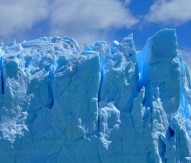
Study: Man-made emissions cause global warming
New research has confirmed that man-made carbon dioxide (CO₂) and methane (CH₄) emissions are the main contributors to global warming.
The study has also revealed that the most pronounced consequences of such emissions are being felt in localised regions around the globe, such as Europe, North America, China, Siberia, the Sahel zone in Africa, and Alaska.
Researchers investigated the causes of global warming using a new statistical method for quantifying causality to analyse the relation between time series data on greenhouse gas emissions and on air temperatures since measuring began 150 years ago. Their results proved that recent global warming is largely the consequence of increased anthropogenic emissions and that further CO2 emissions will lead to further global warming.
They then used the same technique to analyse historical air temperatures and CO2/CH4 data from the past 800,000 years, available thanks to the 3,000m deep ice core drilled in Antarctica more than a decade ago.
The results showed a causal relationship between temperature increase and rising CO2/CH4 levels –the exact opposite of their results from the last 150 years. This confirms the validity of their method as it is well known from the ice core data that, historically, increases in temperature had been followed by higher CO2/CH4 emissions, a causal relationship which seems to have begun reversing some 5,000 years ago.
The analysis confirms this opposite trend for the last 150 years, when unprecedented amounts of CO2 started being pumped into the atmosphere in the industrial age.
Unexpectedly, the researchers also found a high degree of causality in Siberia, Alaska and the Sahel zone in Africa – regions in which human presence and associated activities are not particularly intense. Further investigation is therefore needed to develop a better understanding of regional climate dynamics.
The study was led by the Joint Research Council and carried out in co-operation with a colleague from China’s School of Marine Sciences, Nanjing Institute of Meteorology, who developed the statistical method.
It has been published in the journal Nature Scientific Reports.




